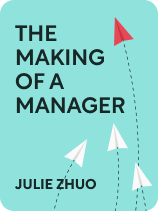

This article is an excerpt from the Shortform book guide to "The Making of a Manager" by Julie Zhuo. Shortform has the world's best summaries and analyses of books you should be reading.
Like this article? Sign up for a free trial here .
Are your business meetings productive? How can you get the most out of your meetings?
According to Julie Zhuo in The Making of a Manager, a core function great managers perform to facilitate great outcomes is running productive meetings. Meetings take up a large portion of company time, so it’s essential to extract maximum value when people come together.
Continue reading to learn how to run an effective meeting.
Running Productive Meetings In Five Steps
According to Zhuo, good meetings provide clarity on important issues and have a specific purpose. To know how to run an effective meeting, follow these steps:
Step #1: Specify the objective you want to achieve. Zhuo says there are five possible objectives: make a decision, share information, provide feedback, generate ideas, and strengthen relationships. Making the objective of the meeting clear to all attendees will help you avoid wasting time.
Step #2: Invite the people necessary to fulfill your intended outcome. For example, if you call a meeting to announce that you’re ramping up the production of a product to boost sales, representatives from operations, sales, and marketing should attend so they can coordinate their efforts to accommodate the higher volume of product and achieve sales goals.
Step #3: Help attendees prepare in advance. Send out the agenda, and have presenters share any documents, charts, or spreadsheets the day before the meeting so everyone can familiarize themselves with the material. As Zhuo says, this allows people to share more thoughtful input and stay focused during the meeting.
Step #4: Get the entire group engaged and invite critical input. To avoid one or two voices dominating the discussion, explicitly say that you want everyone to participate, share their views, and ask hard questions. You can also encourage participation by going around the room and asking everyone to weigh in on a particular topic, or you can have people write down their thoughts on paper, then openly discuss similarities and differences in an open forum. Zhuo asserts that you’ll get better outcomes from meetings if everyone is engaged.
Step #5: Clarify the next steps. Before you conclude the meeting, make sure everyone is clear about what decisions were made and what action steps are expected. Later, send out an email summary that highlights relevant points of the discussion and what decisions were made, as well as when you’ll be following up for progress reports. Zhuo says this helps keep everyone aligned and accountable.
Tips to Become Masterful at Organizing Meetings
Zhuo provides a solid framework for organizing your team to run effective meetings. This will help you keep people aligned on expectations and work together on things that matter. However, she omits some detailed guidance that can help you get even higher returns from your meetings. Follow these tips from other business experts:
Design every aspect of the meeting around your objective. Don’t merely identify the meeting’s objective, as Zhuo suggests. You should completely tailor every aspect of the meeting to the objective to increase efficiency and ensure productive outcomes. For example, choose when meetings happen based on your goal. Research shows that brainstorming and strategic thinking are best in the mornings when people have the most mental energy. Creative problem solving is better later in the day when people are less distracted and more relaxed. Also, define the meeting length based on how many people are involved and how in-depth the project is. Don’t schedule an hour when you only need 20 minutes.
Make sure everyone knows what role they’re expected to play. When you invite the people necessary to fulfill your meeting’s purpose, as Zhuo says, save time by also appointing roles ahead of time, including presenters, a notetaker, and a timekeeper.
Allot a specific amount of time for each agenda item. To help people prepare in advance, as Zhuo recommends, give them a heads-up about their time constraints for discussions or presentations so they can prepare accordingly. Then, during the meeting, be sure to stick to the agenda. This demonstrates that you’re an effective and organized leader—another way to build trust in your team.
Don’t force introverts to speak. Giving everyone in a meeting the opportunity to speak, as Zhuo recommends, may run the risk of alienating more introverted employees by putting them on the spot. Be patient when introverts don’t participate in meetings as much as others. Often, their silence is a sign that they want to think critically before they speak, which makes their input more valuable.
Thank everyone for their time and contributions. Don’t just send out the next steps and summaries once meetings are complete. Always end on a positive note by expressing gratitude for your team’s hard work.

———End of Preview———
Like what you just read? Read the rest of the world's best book summary and analysis of Julie Zhuo's "The Making of a Manager" at Shortform .
Here's what you'll find in our full The Making of a Manager summary :
- How to build a team and motivate them to work together
- How to run productive meetings
- Tips on how to interview and hire the right employees






